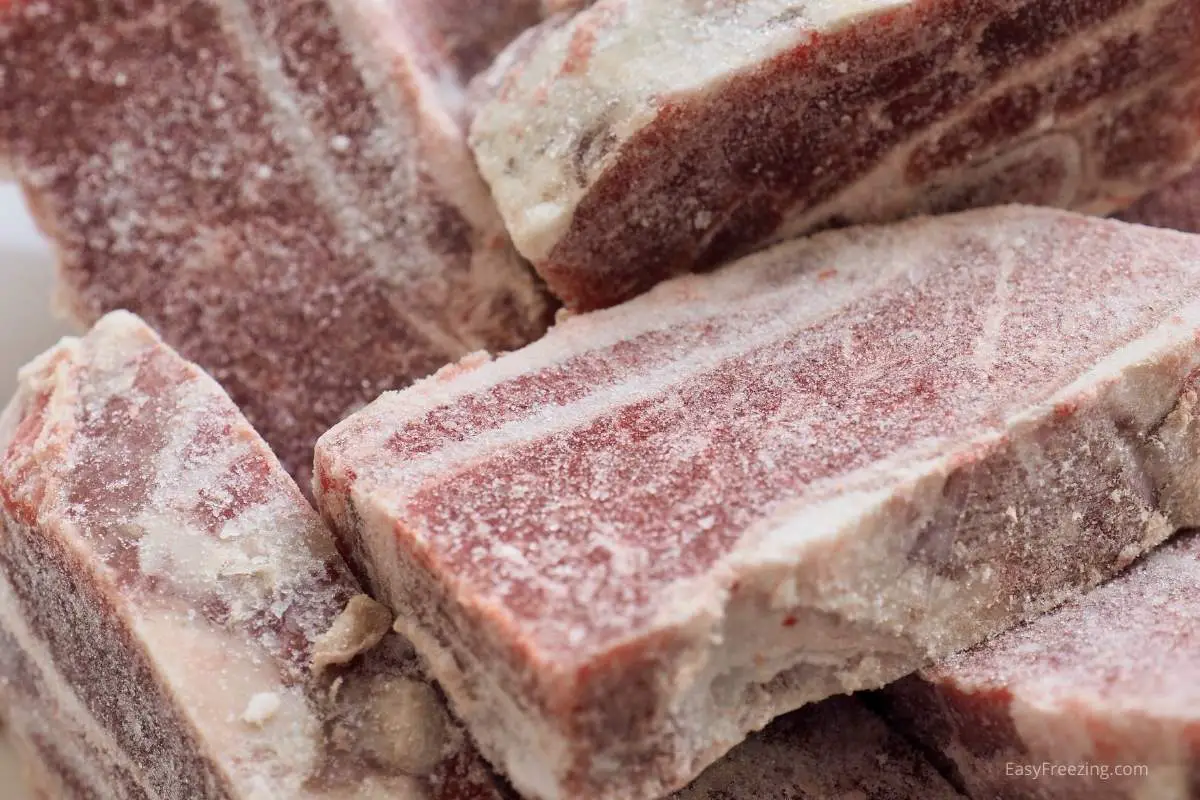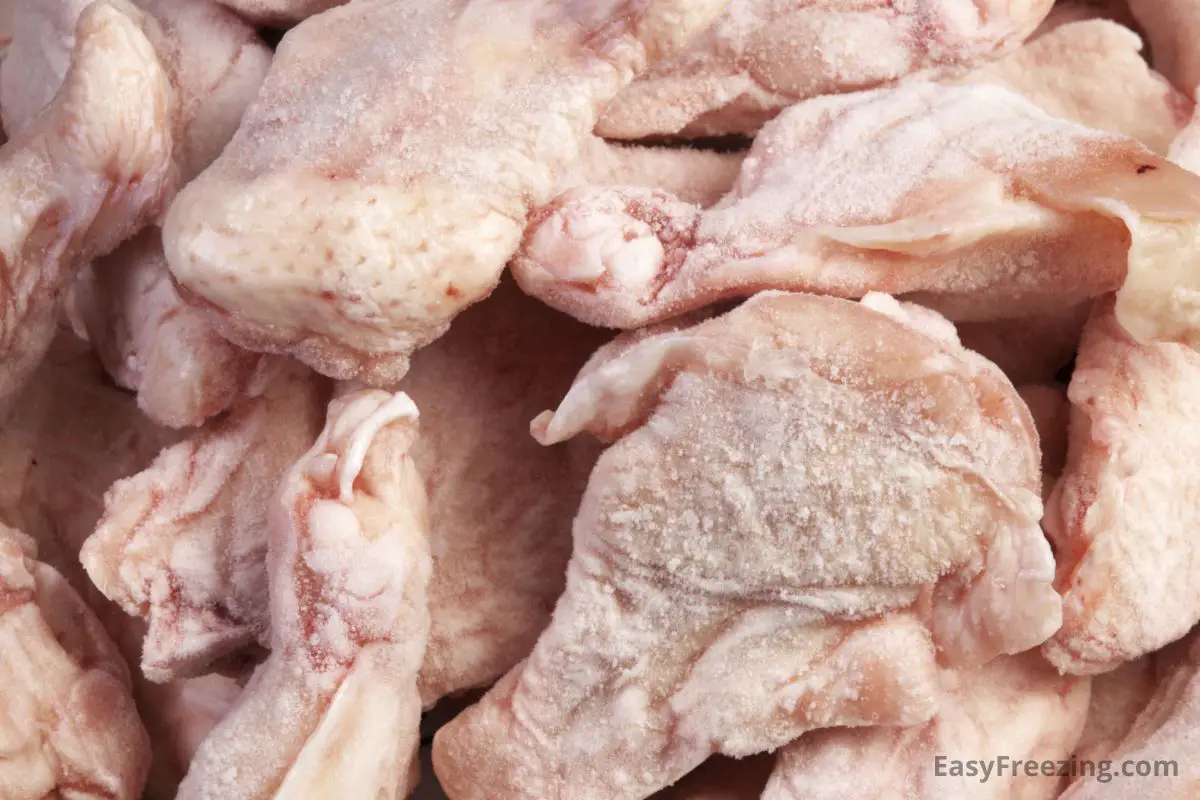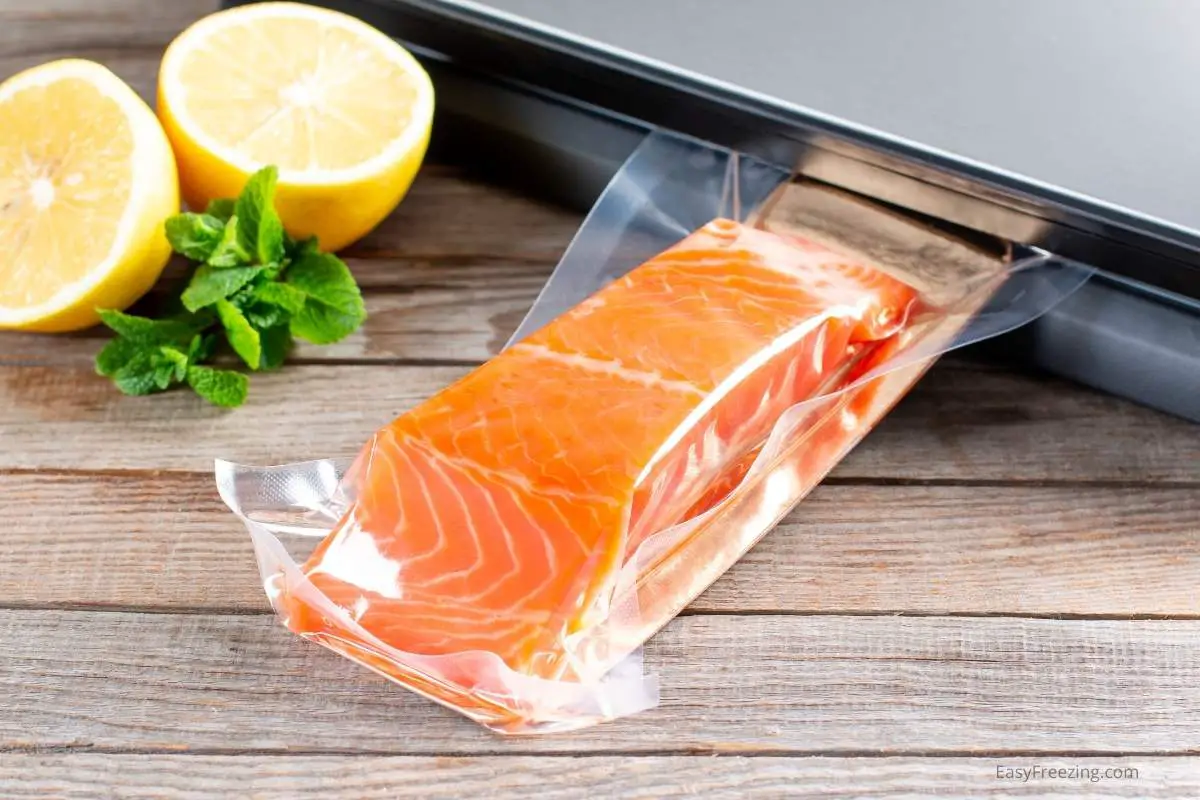The Best Ways to Freeze Meat (5 Crucial Tips)
Buying fresh meat when it is on sale and then storing it in the freezer is a great idea, as long as you know the right way to freeze each type of meat.
Why’s it so important to learn the best way to freeze meat?
The answer is “for food safety.” Improperly stored meat can be dangerous to your health. The second reason is that “improper freezing spoils both the texture and the quality of the meat.” It will be a tragedy if your specialty cut of meat turns into mush after thawing.
Not all cuts of meat are packaged in the same way, and it’s important that they each be handled and frozen in the correct manner.
In this article, you will find five important tips about freezing meat in general, then we’ll cover preparing specific fresh cuts of meat for the freezer.

1. Organize Meats Into Meal-Sized Portions
After arriving home from the supermarket with fresh meat, remove the butcher paper or packaging and divide it into portions that would be a realistic size for a meal.
Rewrap the meat portions in freezer paper and then, for a second airtight layer of protection, place them side by side in a freezer-safe plastic bag. This prevents the meat from being frozen together in a lump.
Remember that the more often you have to take the meat out of the freezer and then put it back, the more exposure it has to bacteria. So dividing and packaging the meat into meal-sized portions will allow you to only pull out the meat you need at any given time without negatively affecting the rest.
2. Consider Vacuum-Sealing Meat
The optimum way to wrap meat is to use a vacuum sealer to remove all the air from the storage packaging. Air in direct contact with frozen meat causes oxidation and freezer burn.
The meat is placed in a plastic vacuum sealing bag or between sheets of plastic wrap that are then compressed on the edge by the vacuum sealer unit. You can watch as the air is visibly sucked out of the package, causing the plastic to cling to the meat.
Vacuum sealing is the best way to protect your meat in the freezer for long-term storage.
3. Meat Should Be Frozen Fast

Regardless of whether you wrap your meat or vacuum seal it, all meat should be frozen as quickly as possible to prevent spoilage from water condensation and air contact, which can cause freezer burn.
Preventing Freezer Burn on Meat
Freezer burn happens when the water in the meat encounters cold air and forms a snowy crust. These ice crystals affect both the taste and texture of the meat.
Ice crystals can also be caused by a freezer that is not quite cold enough. Always make sure your freezer is set to 0ºF or lower.
4. Chill Meat While Thawing
The point at which your meat is most vulnerable to developing bacteria is during the thawing process. This is because raw meat and warming temperatures lead to microbial growth.
Here are some tips for thawing frozen meat that will help you avoid the growth of bacteria.
Don’t Thaw Meat At Room Temperature
The number one rule is to never let meat thaw on a countertop at room temperature, as this encourages bacteria growth. Bacteria thrive in ambient room temperatures thus, leaving meat on the kitchen counter to thaw is probably the worst way to thaw it.
When meat thaws this way, parts of the meat will be fully thawed and sitting at or close to room temps while other parts of the meat are still frozen. The general consensus is that no food (raw or cooked) should be left at room temperature for more than 2 hours.
When it comes to meat, I would definitely err on the side of caution!
Thawing Meat In The Fridge (Slow But Best)
The safest way to thaw meat is to put it in the refrigerator overnight. This way, the frozen meat can thaw slowly and safely while still remaining cold enough to limit bacteria from growing. Larger cuts of meat or items such as a butterball turkey should thaw for two or three nights.
The good thing about fridge thawing is that if you change your mind before the meat is fully thawed, you can put it right back in the freezer.
Thawing Meat In Cold Water (Fast without Cooking it)
A fast way to safely thaw meat is to place wrapped cuts in a bowl of cold water. To prevent bacterial contamination, replace the water every 30 minutes with fresh chilled water.
The cold water will defrost the cut of meat relatively quickly while keeping it cold and safe from microbes.
Thawing Meat In The Microwave (Fastest But Not a Good Choice)
Thawing meat in the microwave is fast but not ideal as it can change the texture of the meat. Microwaves are also not all that reliable when it comes to defrosting meat evenly and thoroughly.
Before choosing this method of thawing, check your microwave’s manual to make sure you are using the temperature and/or defrost settings correctly.
5. Store Meat In the Coldest Part of The Freezer
Store frozen meat in the very coldest part of your freezer. In most refrigerators, the frostiest area of the freezer is located way in the back, furthest from the door.
Ideally, your meats should be frozen solid as a rock after a day or two in your freezer. If your meat packages are not rock solid, you might be dealing with a food safety issue.
Soft packages in your freezer mean that your electricity went off, the temperature isn’t set right, the door is being opened too frequently, or the weather is simply too hot and humid to allow your freezer to operate properly. Soft meat in the freezer is spoiled. Throw it out!

The Best Ways To Freeze Different Kinds of Meat
Know that we’ve talked about the best ways to freeze meat in general, this section will deal with how to freeze specific popular cuts of meat.
Freezing Steak
The best way to freeze steak is to wrap each piece with plastic wrap, then again with aluminum foil, and then again in a freezer bag.
Steaks last in freezer bags for up to a year, as long as your freezer temperature is 0ºF or lower.
Freezing Ground Meat
Ground beef, chicken, turkey, or pork should be separated into portions and frozen. You can also freeze cooked ground meat.
One way to freeze ground meats is to shape the meat into burgers. To freeze several burger patties at once, separate them with freezer paper and put them in a plastic bag.
Alternatively, raw ground meat can be placed in a large freezer bag, then pressed flat with a rolling pin. Sheets of frozen ground meat stack nicely in your freezer and take up very little room.
Freezing Raw Chicken

Frozen chicken can last two years or more in the freezer if you use a vacuum sealer to bag it.
If you are using plain plastic bags, press out the air trapped inside before sealing them. Separating chicken pieces, like wings or legs, with pieces of parchment paper prevents everything from freezing together in one big clump.
Freezing Raw Fish

All fish, but especially freshly caught fish, has a short shelf life, so you need to freeze it right away to keep it from spoiling.
Protecting fish with vacuum-sealed plastic is the best idea. You can also wrap it tightly with saran wrap.
Alternatively, you can use a technique called ice glazing on a whole fish. Dip the fish in water and then place it on a tray in the freezer. Once it is frozen, dip it in water again and place it back in the freezer.
Continue to repeat this procedure until you have a 1/4 inch thick glaze of ice covering the fish. Once this is accomplished, place the fish in a freezer bag and put it back in the freezer.
Thaw overnight in the fridge or place the sealed fish in a cold water bath, making sure to change the water frequently until thawed.
Best Way to Freeze Meat (5 Crucial Tips) – Conclusion
Now you know all the best ways to freeze meat, including beef, chicken, and fish. Now you can buy meat when it’s on sale and enjoy it whenever you want.
More importantly, you now know how to freeze meat safely so that it not only can be stored for a long period of time but how to handle it in a way that discourages the growth of harmful bacteria.






